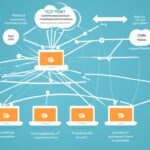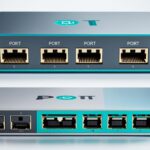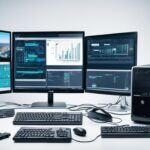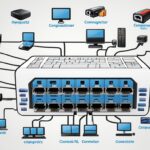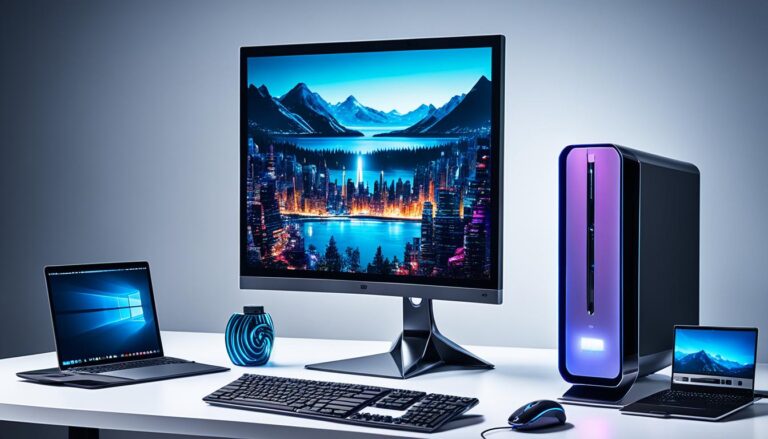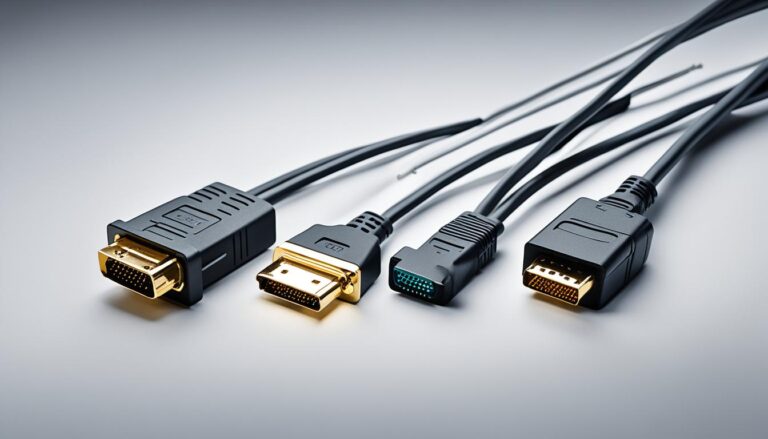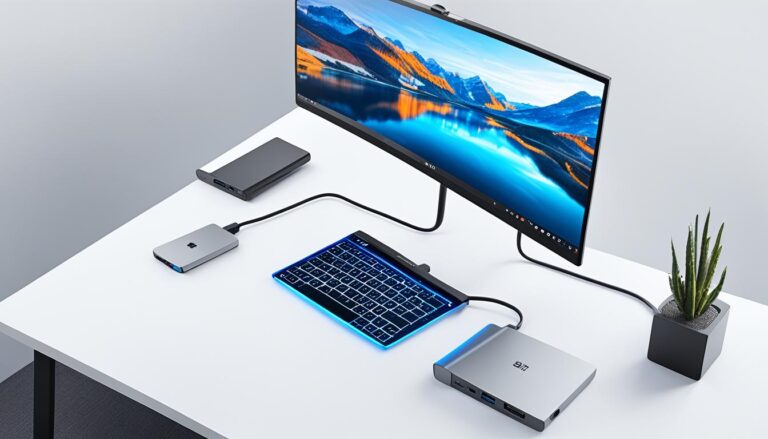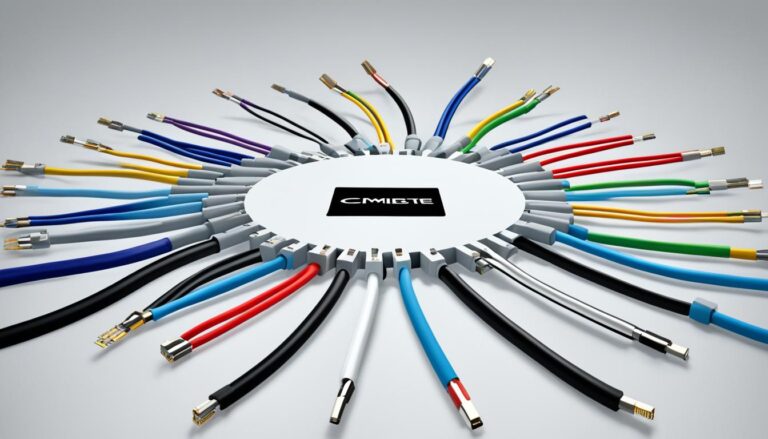Port 4 plays a vital part in handling traffic that moves both ways. It is recognized by the Internet Assigned Numbers Authority (IANA) for certain tasks. Among many ports, port 4 is unique because it works differently and is used a lot in various setups.
It’s key to know what port 4 does to keep networks working well. Using it correctly helps make sure networks run smoothly. This allows devices to talk to each other without problems.
By learning more about port 4, network managers can get better at running their systems. They can make sure that all devices stay connected properly.
What is a Computer Network Port?
A computer network port is key for network protocols to communicate between devices efficiently. These ports are numbers assigned to specific services for data transfer. Knowing about computer network ports is vital for managing networks well.
Port numbers vary from 0 to 65535. They are crucial in spotting the service or application linked with data sharing. Each network request gets its own port number. Port numbers fall into three groups: well-known ports, registered ports, and dynamic ports.
Well-known ports, 0 to 1023, are tied to frequently used services. For instance, port 80 is for HTTP and port 21 is for FTP.
Registered ports stretch from 1024 to 49151. These ports are for specific purposes and often used by business software.
Dynamic ports, between 49152 to 65535, are for general use. They are assigned on-the-fly to different services and applications.
This system of dividing ports makes network communication orderly and effective. It helps devices know and interact with the right services or applications. This setup also aids in avoiding mix-ups and keeps data moving smoothly.
Computer network ports are critical for network setups. They enable devices to link up and chat efficiently. Network bosses can manage networks better by grasping ports and their numbers. This ensures network protocols run without a hitch.
Key Takeaways:
- A computer network port is a software-defined number linked with a network protocol for data sharing.
- Port numbers go from 0 to 65535 and are sorted into well-known, registered, and dynamic ports.
- Well-known ports (0-1023) are for specific services. Registered ports (1024-49151) for specific purposes. Dynamic ports (49152-65535) for general use.
- Knowing about computer network ports is key for smooth network management and improving network protocol functions.
How Do Network Ports Affect Cybersecurity?
Network ports are key in cybersecurity. Attackers scan ports to find weak services. Firewalls check port numbers to control access. By keeping some ports open and others closed, we can block unwanted access. Port forwarding routes communications to other computers. It’s important to know how ports impact security to keep networks safe.
Port Scanning and Vulnerability Identification
Cybercriminals use port scanning to find network flaws. They look for outdated or weak services on ports. To defend against this, update networks and use strong firewalls.
The Role of Firewalls in Network Security
Firewalls act as guards for networks, deciding what comes in or goes out. They filter traffic based on port numbers. Setting firewalls to allow only needed traffic helps protect data. Keep firewalls updated to maintain strong network security.
Port Forwarding for Efficient Communication
Port forwarding sends incoming traffic to another port. It’s for when you need external access, like for a web server. Use it wisely to avoid security risks. Make sure to use encryption and need-based access for safety.
What is a Computer Hardware Port?
In computer hardware, a port refers to the jack or receptacle where peripheral devices can be plugged in. These ports allow devices to connect easily to a computer. Knowing about the different ports can improve how you use your computer.
Standardized Ports
Computer hardware ports are designed for specific devices. Some common types include:
- USB ports: Universal Serial Bus (USB) ports connect devices like keyboards, mice, and printers. They are versatile and compatible with many devices.
- Ethernet ports: Ethernet ports link computers to a network or internet via cables. They offer fast internet and network connections.
- DisplayPorts: DisplayPorts connect to monitors or projectors. They support high-quality video and audio for better multimedia content.
- Audio ports: Audio ports connect headphones, microphones, and speakers. They help in audio input and output for better sound experiences.
Serial and parallel ports are outdated now. More efficient options have replaced them.
The Importance of Understanding Computer Hardware Ports
Knowing about computer hardware ports helps connect devices better. It ensures device compatibility and efficient use. It also helps understand a computer’s hardware connectivity potential.
Understanding ports is helpful for troubleshooting too. It can identify why a device isn’t working as expected.
In conclusion, computer hardware ports are key for connecting devices to computers. By understanding these ports, users can make the most of their devices, boosting both productivity and their computing experience.
Conclusion
Port 4 is at the heart of network setups. It handles both TCP and UDP traffic. This makes it a key part for effective network management. Understanding port 4 is vital. It helps organisations manage their networks better and improve security.
Security-wise, port 4 is very important. Knowing how it works allows companies to put in strong security measures. They can use port scanning and set up firewalls. This helps protect their networks. Also, knowing about hardware ports ensures that devices connect well.
To sum up, port 4 plays a crucial role in networks. It’s not just about the hardware. It affects how network protocols run smoothly. For any organisation that wants a secure and efficient network, understanding port 4 and all related elements is essential.
FAQ
What is port 4 and what function does it serve in network configurations?
Port 4 is known as a TCP/UDP port. It acts as a two-way traffic lane in networks. The Internet Assigned Numbers Authority (IANA) assigns it for certain tasks. It is essential for different protocols.
What is a computer network port and how does it work?
A computer network port is a number that helps in communication. It is linked to a network protocol. This helps to send or receive messages for a particular service.
Ports range from 0 to 65535. Each request over a network is given a port number. Known ports, 0 to 1023, serve specific functions. Ports 1024 to 49151 are for any use. Ports 49152 to 65535 are dynamic and flexible.
How do network ports affect cybersecurity?
Network ports are vital for cybersecurity. By scanning ports, hackers can find weak spots in networks. Firewalls use port numbers to filter communication. This helps block or allow certain data through.
Setting firewalls to limit communication to certain ports increases security. Port forwarding lets data be sent to another computer for checking.
What is a computer hardware port?
A computer hardware port is where you connect devices. They match specific standards. You will see USB, Ethernet, and DisplayPorts commonly used.
Older types like serial and parallel ports are rare now.



